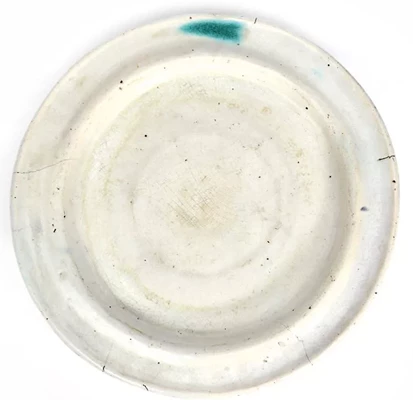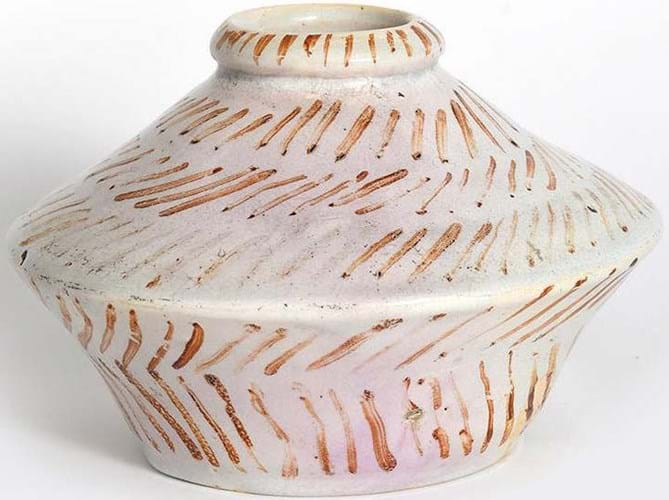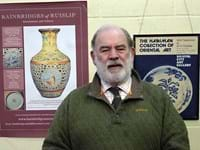It emerged after the auction that these seven pieces were on the market for the first time: Harriss is understood to have inherited them by descent from the poet, critic and suffragist Alice Meynell (1847-1922), a customer at the famous Bloomsbury store at 33 Fitzroy Square during its brief tenure from 1913-19.
Although Omega work was typically produced anonymously (designs were marked only with the Greek letter), most of the pottery is thought to be by Fry’s hand. He began designing and making his own ceramics in the autumn of 1913, learning the basics of throwing and glazing clay first under the Surrey potter George Schenk and then at Carter & Co in Poole.
While Fry’s technical skills were limited, these wares have since become important to the Bloomsbury Group story and an addendum to the wider history of British studio ceramics. Only rarely do they come to the market.
The Harriss group of three Omega vases and four plates achieved hammer prices that take the collecting sphere into new financial territory. Two bidders divided the spoils. They ranged from a £2500 (estimate £500-1000) broken and reglued plate with blue outline decoration to a £10,000 (£800-1000) 13in (34cm) charger in a monochrome tin glaze except a single turquoise splash to the rim.
Guided at £1000-1500 but sold at a mighty £20,500 was a 7in (17cm) diameter plate painted with two cranes in red lustre on a tin-glaze.
A textile with a comparable motif is illustrated in Omega and After, Bloomsbury and the Decorative Arts (1985) by Isabelle Anscombe, while a comparable design of cranes was worked in marquetry to a table commissioned by Bloomsbury patron Lady Jean Hamilton.
A 25% buyer’s premium was charged.
Despite the best efforts of its directors, Omega struggled financially and closed after six difficult years. In June 1919, as an ‘everything must go’ sale began, Fry wrote to his friend Michael Saddler saying: “The utter indifference…of the public to what we have attempted has bought Omega to disaster.”
Later in 1940 when Virginia Woolf wrote her biography of Fry she recalled: “So the Omega Workshops closed down. But some of the things he made still remain – a painted table; a witty chair; a dinner service; a bowl or two of that turquoise blue that the man from the British Museum so much admired.
“And if by chance one of those broad deep plates is broken, or an accident befalls a blue dish, all the shops in London may be searched in vain for its fellow.”




















